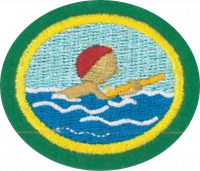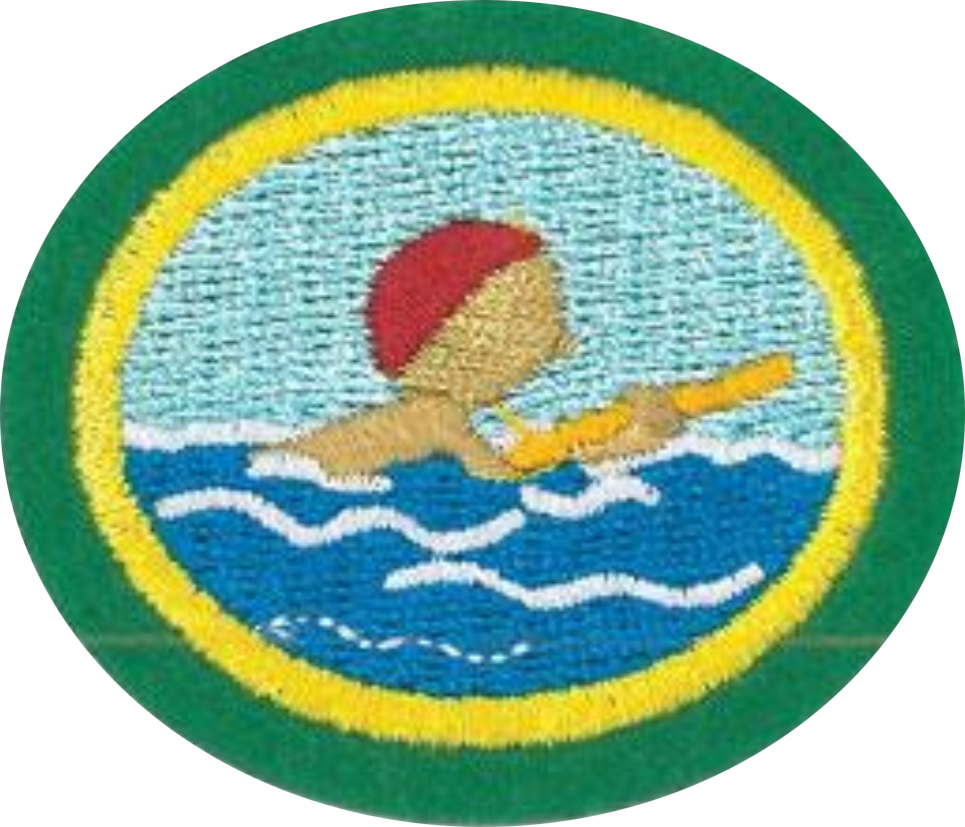AY Honor Basic Water Safety Answer Key
1
The goal is to teach how to get in and out of a pool without assistance and in a safe manner.
2
This can be done without the whole body in the water to help the Pathfinder become more comfortable with being under water.
3
This would be a good opportunity to tell the story of Naaman as found in 2 Kings 5.
This is an important foundational skill used for other swimming strokes like the freestyle and breast strokes.
4
An excellent motivational object to use for this is a large coin such as a quarter or a silver dollar. This serves as motivation only if you agree to let the Pathfinder keep the coin once it is retrieved the second time.
5
Try to minimize arm and leg movement as much as possible. The face can either be in or out of the water. This requirement is intended to prepare the swimmer for stomach swims such as the freestyle/front crawl and the breast stroke.
Fill your lungs with as much air (like a balloon) and allow your body to relax.
6
You can push off the edge of the pool or the bottom of the pool. Push and glide with the body in a strait and streamlined position for maximum distance.
7
Take a big deep breath (to make your lungs like a balloon), lean back so that your head is in the water, and arch your back to help bring your feet closer to the surface. Relax and don’t forget to breathe!
8
The easiest kick to use from the side of the pool is the flutter kick. Other kicks can be practiced if kick boards or other aids are available. Ensure that a swimmer does not swim into deep water if unprepared or does not have the stamina to sustain deep-water swimming.
9
No specific stroke is required. For less-strong or non-swimmers, do this in the shallow portion of a pool with a parent/helper next to them to assist only if needed while they practice. This requirement should be completed without any assistance or touching the bottom.
10
Life jackets need to be properly sized for the wearer. Children need to use a child life jacket. All buckles should be snapped into place and any ties securely fastened. The fit should be snug, but not too constraining. In the water the jacket should stay put on the body, not float up above the wearer (making the jacket useless and unsafe).
11
11a
How you call for help depends on who needs help, and where you are when help is required.
- If you are calling for help for someone else and have access to a telephone, dial 911 or the appropriate emergency number in your area.
- If you are calling for help for someone else and you are in the water too, yell "Help!" as loud as you can. If there is a lifeguard present, go to him or her as quickly as you can and tell them someone is in trouble.
- If you yourself need help while in the water, call out for it and wave your arms.
- Some lifejackets have a whistle which is an excellent way to signal distress.
11b
The most frequent muscle to suffer a cramp from swimming is the calf muscle. To release a calf cramp while swimming, float on your back, stretch your legs out in front of yourself, and point your toes toward your head while pushing your heel out away from your head. This will stretch the calf muscle.
For muscles in the hamstring or buttocks: while back floating, use one hand to gently massage the tight muscle to release the cramp.
11c
Firmly brace yourself on a pool deck, pier or shoreline, by lunging down in a staggered stance (one foot forward and one foot back) shifting your center of gravity away from the water and reach out to the person with any object that will extend your reach, such as a pole, oar, paddle, tree branch, shirt, belt or towel.
If no equipment is available, you can perform a reaching assist by lying down and extending your arm or leg for the person to grab.
11d
- Learn to swim before you go into the water. Sounds silly, but many people think it will come naturally, and it really doesn’t.
- Make sure that you are safe to swim. (Safe from currents/tides, during the daytime, safe water conditions, not over tired, didn’t just eat to avoid cramping/sickness, etc.)
- Swim near a lifeguard so help is available if you need it.
- Never swim alone, have at least one adult actively watching all swimmers from the side of the pool, dock, boat, or shore.
- Supervise all children closely, even when lifeguards are present, regardless of skill level.
- Don't rely on flotation devices, such as rafts or floaties, you may lose them in the water.
- Alcohol, drugs, and/or relaxing medications and swimming don't mix.
- Protect your head, neck, and spine by never jumping or diving into unfamiliar waters.
- Never go headfirst into shallow water (less than 9 feet or 3 meters).
- As soon as you believe that you may be in trouble, call or wave for help.
- Follow all facility regulations and lifeguard directions.
- Swim parallel to shore if you wish to swim long distances.
- Stay hydrated, you do not feel the sweat on your body while in the water and can easily become dehydrated leading to heat exhaustion.
- Protect your skin. Use SPF 30+ (minimum) to protect from harmful UV rays that can lead to skin cancer (like Melanoma) over time. Reapply every 90 minutes if in water for any amount of time (120 minutes maximum both in and out of water). Also reduces likelihood of sunburn.
References


